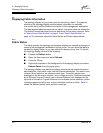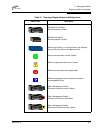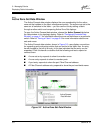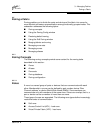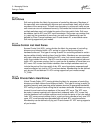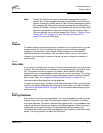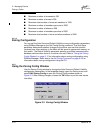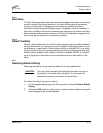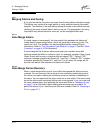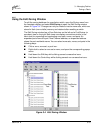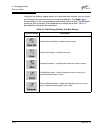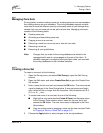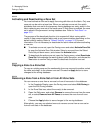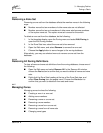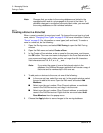
3 – Managing Fabrics
Zoning a Fabric
3-14 59022-04 B
3.5.4
Merging Fabrics and Zoning
If you join two fabrics, the active zone sets from the two fabrics attempt to merge.
The fabrics may consist of a single switch or many switches already connected
together. The switches in the two fabrics attempt to create a new active zone set
containing the union of each fabric’s active zone set. The propagation of zoning
information only affects the active zone set, not the configured zone sets.
3.5.4.1
Zone Merge Failure
If a zone merge is unsuccessful, the inter-switch links between the fabrics will
isolate due to a zone merge failure, which will generate an alarm log entry. The
reason for the E_Port isolation can also be determined by viewing the port
information. Refer to ”Port Information Data Window” on page 5-7and the ”Show
Command” on page A-41(Port keyword).
A zone merge will fail if the two active zone sets have member zones with
identical names that differ in content or type. For example, consider Fabric A and
Fabric B each with a zone in its active zone set named “ZS1”. Fabric A "ZS1"
contains a member specified by Domain ID 1 and Port 1; Fabric B “ZS1” contains
a member specified by Domain ID 1 and Port 2. In this case, the merge will fail
and the inter-switch links between the fabrics will isolate.
3.5.4.2
Zone Merge Failure Recovery
When a zone merge failure occurs, the conflict that caused the failure must be
resolved. You can correct a failure due to a zone conflict by deactivating one of
the active zone sets or editing the conflicting zones so that their membership is
the same. You can deactivate the active zone set on one switch if the active zone
set on the other switch accurately defines your zoning needs. If not, you must edit
the zone memberships, and reactivate the zone sets. Refer to ”Managing Zones”
on page 3-19 for information about adding and removing zone members. To
permit the fabrics to join, reset the ports that were isolated. Refer to ”Resetting a
Port” on page 5-13.



